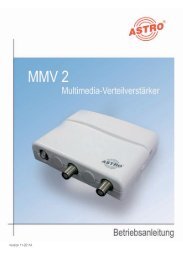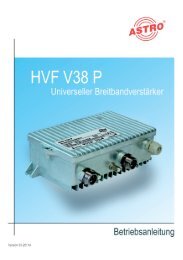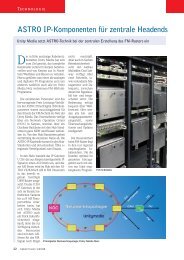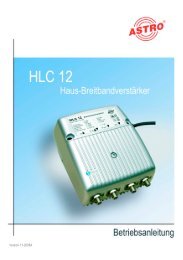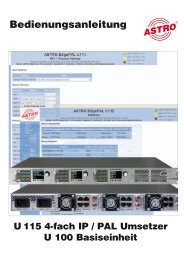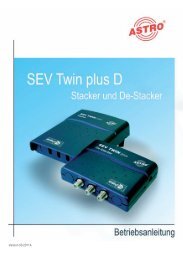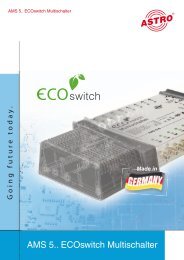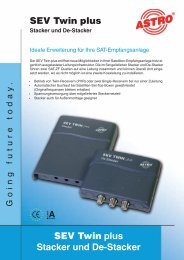U 100-C - Astro
U 100-C - Astro
U 100-C - Astro
Create successful ePaper yourself
Turn your PDF publications into a flip-book with our unique Google optimized e-Paper software.
7 Switching equivalent head-end module circuits /<br />
Replacement<br />
The U <strong>100</strong>-C controller provides an option of manually or automatically switching the replacement<br />
module kept in the headend to an equivalent circuit. The settings for this equivalent circuit can be<br />
accessed using the link “Replacement” in the left screen side of the web interface.<br />
7.1 Manual switching to equivalent circuits<br />
Switching to an equivalent circuit manually is done in the “Replace” field. The options for the<br />
equivalent circuit are displayed here. A headend module is then identified as a replacement mod<br />
ule by the U <strong>100</strong>-C controller, if the HF outputs are configured to “Off”.<br />
Figure 28: Example view of the “Replace” option<br />
The modules deactivated on the HF are backlit in grey in the column “Status” in the view in figure<br />
27, and their status is “off”. Each of these replacement modules are available for selection in the<br />
column “Replace options”. Prerequisite for this is that the outputs in the same cable network have<br />
been bundled (see chapter 7.3 Output segments). To establish the equivalent circuits, the radio<br />
button in the required equivalent circuit option must be selected, and the “Replace” button must<br />
then be pressed. The U <strong>100</strong>-C controller then establishes the equivalent circuit automatically. This<br />
process is documented in the Replacement log file. The module used for the equivalent circuit will<br />
not appear in the column “Replace options” until the equivalent circuit is removed.<br />
Operating Manual U 110-C Controller<br />
23



